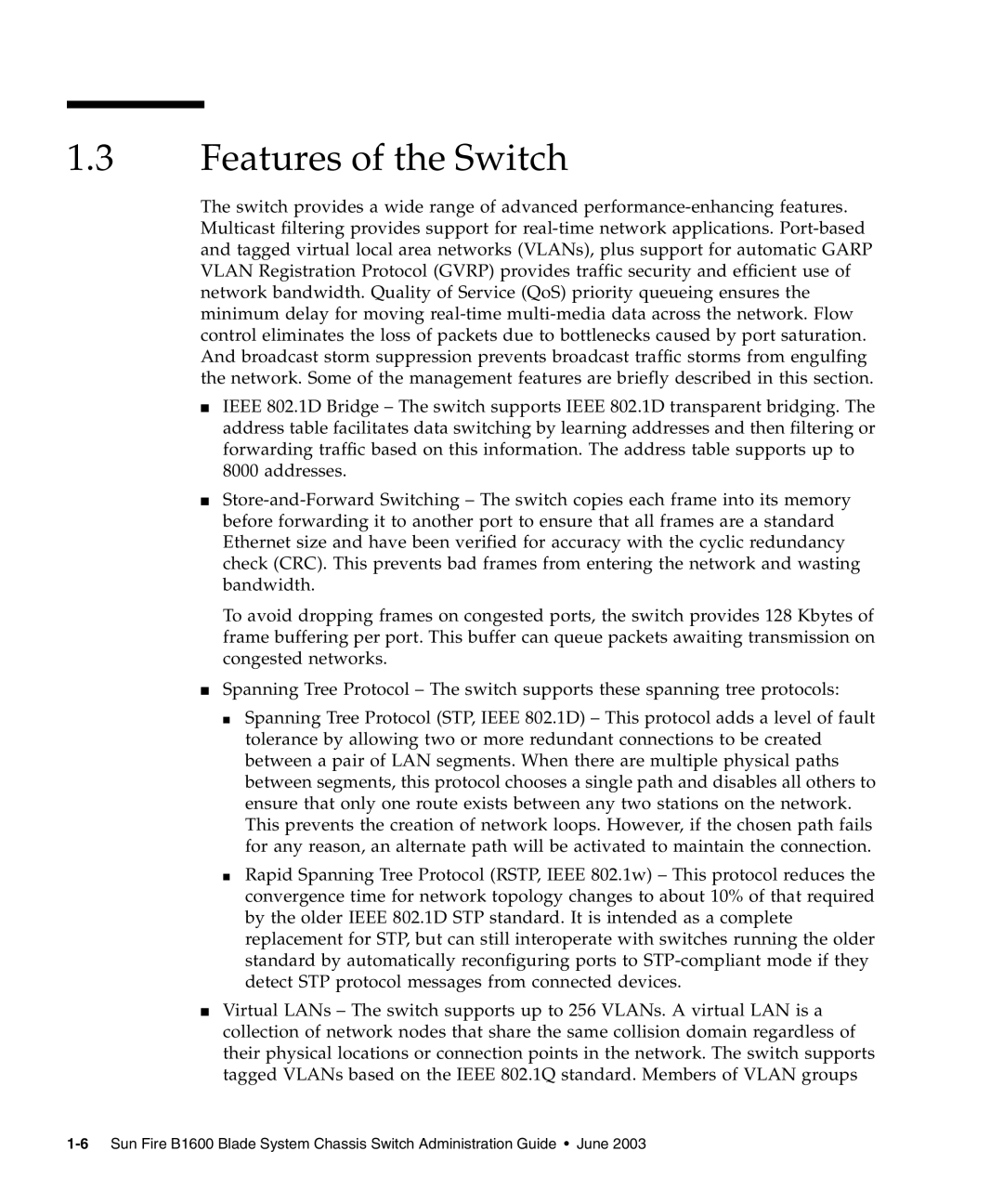1.3Features of the Switch
The switch provides a wide range of advanced
■IEEE 802.1D Bridge – The switch supports IEEE 802.1D transparent bridging. The address table facilitates data switching by learning addresses and then filtering or forwarding traffic based on this information. The address table supports up to 8000 addresses.
■
To avoid dropping frames on congested ports, the switch provides 128 Kbytes of frame buffering per port. This buffer can queue packets awaiting transmission on congested networks.
■Spanning Tree Protocol – The switch supports these spanning tree protocols:
■Spanning Tree Protocol (STP, IEEE 802.1D) – This protocol adds a level of fault tolerance by allowing two or more redundant connections to be created between a pair of LAN segments. When there are multiple physical paths between segments, this protocol chooses a single path and disables all others to ensure that only one route exists between any two stations on the network. This prevents the creation of network loops. However, if the chosen path fails for any reason, an alternate path will be activated to maintain the connection.
■Rapid Spanning Tree Protocol (RSTP, IEEE 802.1w) – This protocol reduces the convergence time for network topology changes to about 10% of that required by the older IEEE 802.1D STP standard. It is intended as a complete replacement for STP, but can still interoperate with switches running the older standard by automatically reconfiguring ports to
■Virtual LANs – The switch supports up to 256 VLANs. A virtual LAN is a collection of network nodes that share the same collision domain regardless of their physical locations or connection points in the network. The switch supports tagged VLANs based on the IEEE 802.1Q standard. Members of VLAN groups
